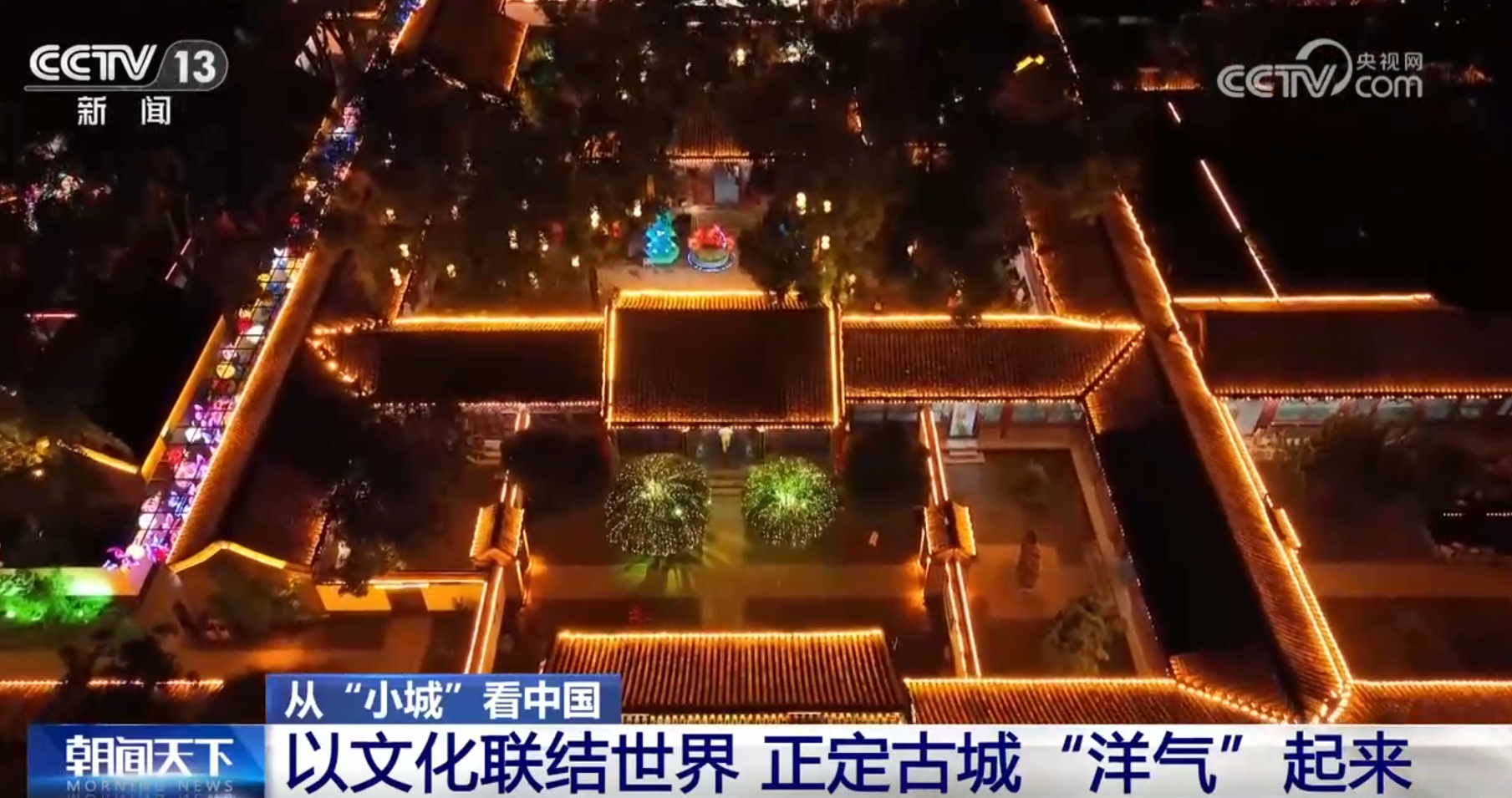According to "Jilin Provincial People’s Government Network" WeChat WeChat official account news, recently, the Jilin Provincial Party Committee and the provincial government issued a notice and issued the "Implementation Plan on Optimizing the Birth Policy and Promoting the Long-term Balanced Development of the Population". The "Proposal" proposes to support banking institutions to provide marriage and childbearing consumer loans of up to 200,000 yuan for registered couples who meet the relevant conditions, and to give different degrees of interest rate cuts according to the birth of one child, two children and three children.
Implementation plan on optimize birth policy and promoting long-term balan development of population
In order to thoroughly implement the Decision of the Central Committee of the Communist Party of China and the State Council on Optimizing the Birth Policy to Promote the Long-term Balanced Development of Population (Zhongfa [2021] No.30), implement the national strategy of actively responding to the aging population, organize and implement the three-child birth policy and supporting measures, promote the moderate birth level, and promote the long-term balanced development of population, adhere to the principles of taking people as the center, taking balance as the main line, taking reform as the driving force and taking the rule of law as the guarantee, and combine the reality of Jilin Province, this book is formulated.
First, accurately grasp the population development situation and scientifically set goals and tasks.
1. Correctly understand the characteristics of population development trend. The seventh population census shows that Jilin Province not only has the general law of population development in China, such as declining fertility rate and increasing aging, but also has its own characteristics and favorable factors. The type of population reproduction has changed from "high birth rate, low death rate and high growth rate" to "low birth rate, low death rate and negative growth rate", and the population size has decreased. However, the average population in Jilin Province has a high education level and the total labor force is abundant, which still maintains the development potential of demographic window and solves the population problem as a whole. Based on the new changes in the population situation and the new requirements for high-quality development, we should give full play to the favorable conditions for population development, optimize the birth policy, stimulate the fertility potential, stabilize the population size, and provide strong human resources support for accelerating the all-round revitalization of Jilin in the new era.
2. Strengthen the monitoring and analysis of population dynamics. Strengthen the construction of grass-roots monitoring network, accelerate the establishment of a population monitoring system covering the whole population and the whole life cycle, track and monitor the fertility situation and population change trend in the province, and deepen the research on major issues such as population and economic and social development. Realize the integration, sharing and dynamic updating of basic information on population services such as reproductive health, census and sample survey, household registration management, schooling, marriage and family, funeral affairs, medical insurance and social security, employment and entrepreneurship, improve the index system for long-term balanced population development, and improve the population forecast and early warning system.
3. Scientifically set population development goals. By 2025, the policy system of active birth support will be basically established, the level of prenatal and postnatal care services will be significantly improved, the maternal mortality rate will drop below 14.5/100,000, and the infant mortality rate will drop below 4 per thousand; The construction of inclusive nursery service system has been accelerated, with 4.5 places for infants under 3 years old per 1,000 population; The cost of childbirth, parenting and education has been significantly reduced, the fertility level has been appropriately improved, and the quality of the population has been continuously improved.
By 2035, the policies, regulations and supporting policies to promote long-term balanced population development will be more complete, the service management mechanism will operate efficiently, the fertility level will be more moderate, and the population structure will be further optimized. The maternal mortality rate has dropped below 12/100,000, the infant mortality rate has dropped below 3/10000, and the number of infants under 3 years old per 1,000 population has reached about 8. The service level of prenatal and postnatal care is in line with the people’s needs for a better life.
Set population targets by annual decomposition and make dynamic adjustments according to the population development situation of the whole province.
Second, implement the three-child birth policy and accelerate the improvement of policy support.
4. Do a good job in adjusting and connecting laws and regulations. Timely do a good job in effectively linking the newly revised Regulations on Population and Family Planning in Jilin Province with relevant policies and regulations, vigorously advocate marriage and childbearing of appropriate age, prenatal and postnatal care, and fully implement the three-child birth policy according to law. Strengthen the member units of the population and family planning leading group to perform their duties and promote the implementation of policies.
5. Cancel social support and other restrictive measures. The household, school, employment, etc. are completely decoupled from the individual fertility situation. Cancel the collection of social support fees, clean up and abolish the relevant punishment regulations, and maintain the original punishment decision for those who have given birth to three children in violation of laws and regulations and have made a decision to collect social support fees according to law and completed the implementation; If a collection decision has been made but has not been completed, the part of the collection will not be returned, and the part that has not been collected will not continue to be collected; Those who have not yet investigated or made a decision on expropriation will not be accepted or dealt with. It is necessary to thoroughly and meticulously do a good job in policy interpretation and ideological work of illegal birth groups such as those who have paid social support fees and have been punished by party discipline and political discipline, and handle historical issues such as punishment for super-children in accordance with the law and regulations, leaving no dead ends.
6. Improve the population service system. Establish and improve the population service system covering the whole life cycle. Strengthen the construction of management service systems such as maternal and child health care family planning service stations and day care stations below the county level, enhance the function of caring for the young and providing for the aged, and improve the level of management services. Implement the birth registration system, do a good job in birth consultation and guidance, and speed up the cross-provincial operation of birth registration. Promote the joint operation of "one thing for birth" such as birth medical certificate, household registration, medical insurance participation, and social security card application.
7. Revise and improve maternity leave and other systems.On the basis of national maternity leave of 98 days, the maternity leave for female employees who have given birth according to the policy is increased to 180 days, and the nursing leave for men is increased to 25 days on the basis of 15 days. Choose qualified areas or enterprises and institutions, take the lead in implementing parental leave pilot, and implement couples who give birth according to the policy. Before their children are 3 years old, each person will take 20 days of parental leave every year.Strive to include Jilin Province in the pilot province of parental leave.
8. Balanced quality education resources. Optimize the allocation of teachers’ resources, carry out exchanges and rotations between principals and teachers of compulsory education schools, continuously expand the coverage of quality education resources, promote the balanced development of compulsory education and the integration of urban and rural areas, and effectively solve the problem of "school choice fever".
9. Support the coordinated development of child care. Comprehensive preschool children’s demand for admission to the park, the conditions for running the park and the structure of the school system, etc., encourage qualified kindergartens to set up nursery classes to recruit children aged 2-3, and promote the coordinated development of child care and education.
10. Implement the birth incentive policy. Support all localities to give a certain percentage of incentives and rewards to families with two or three children according to the current standard of fees for education in ordinary public kindergartens and kindergartens, and the provincial finance will give appropriate subsidies according to the situation.
11.Provide credit support for marriage and childbirth. Support banking institutions to provide marriage and childbearing consumer loans of up to 200,000 yuan for registered couples who meet the relevant conditions, and give different interest rate cuts according to the birth of one child, two children and three children.
12.Fully liberalize the restrictions on urban settlement. Fully liberalize the restrictions on the settlement of all cities in the province, and couples with household registration outside the province have children according to the policy.Jilin (Province)If you settle in the province, you can get the treatment of the citizens.
13. Reduce or exempt value-added tax and enterprise income tax. According to the policy, couples who have two children and three children set up small and micro enterprises, and small-scale taxpayers with monthly sales of less than 150 thousand yuan are exempt from VAT; For the part whose annual taxable income does not exceed 1 million yuan, it is included in the taxable income at a reduced rate of 12.5%, and the enterprise income tax is paid at a tax rate of 20%; For the part of the annual taxable income exceeding 1 million yuan but not exceeding 3 million yuan, it shall be included in the taxable income at a reduced rate of 50%, and the enterprise income tax shall be paid at the rate of 20%.
Three, improve the maternal and child health care system, improve the level of prenatal and postnatal care services.
14. Implement relevant systems for maternal and child safety. Carry out the maternal and child safety action promotion plan, and carry out special project, whole-process management and centralized treatment for high-risk pregnant women. Strengthen the construction of treatment centers for critically ill pregnant women and newborns at all levels, set up a regional first-aid expert group, establish a linkage mechanism between midwifery institutions, first-aid centers and blood stations, strengthen key guarantees such as transshipment, treatment and blood use, unblock the green channel for referral and treatment, and improve the ability of clinical treatment.
15. Implement the maternal and child health protection project. Accelerate the standardized construction and management of business premises of maternal and child health care institutions at all levels, realize a standardized maternal and child health care institution in administrative areas above the county level, consolidate the grassroots network at the county, township and village levels, and promote the integration of reproductive health services into the whole process of women’s health management.
16. Improve children’s basic medical ability. Strengthen the standardization and standardization of children’s health clinics, and carry out screening, diagnosis and intervention of risk factors and diseases such as myopia, unbalanced nutrition and dental caries for children and adolescents. Build a child-friendly hospital and comprehensively improve children’s medical treatment ability.
17. Comprehensive prevention and treatment of birth defects. Improve the prevention and control network of birth defects and implement three-level preventive measures. Strengthen the popularization of relevant knowledge and consultation on prevention and control of birth defects, strengthen pre-marital health care, promote pre-pregnancy eugenics health examination and prenatal screening diagnosis, and promote integrated management services and multidisciplinary cooperation during pregnancy, prenatal and postpartum. Expand the scope of neonatal disease screening, and promote early screening, early diagnosis and early treatment. Do a good job in basic medical care and rehabilitation assistance for children with birth defects.
18. Make up for the shortcomings of maternity services. Strengthen the configuration of key emergency equipment such as baby incubator and neonatal radiation rescue desk to meet the needs of obstetrics and gynecology and pediatrics. Strengthen the supply of maternal and child health resources in rural areas, and focus on improving the ability of critically ill pregnant women and newborns through counterpart support from medical associations. Strengthen the systematic training of medical personnel in obstetrics and gynecology and pediatrics, hold regular training courses on diagnosis and treatment ability and rescue technology improvement every year, and train in batches and guide them in different categories to improve the service ability.
19. Scientific diagnosis and treatment of infertility. Carry out special research on the technology of improving fertility and improve the diagnosis and treatment technology and service level of infertility. We will build a human assisted reproductive technology service system with balanced supply and demand, reasonable layout and standardized management. Strengthen the supervision of human assisted reproductive technology services and strictly regulate the application of related technologies.
Four, the development of universal care service system, effectively protect the infant care service.
20 overall planning and construction of nursery facilities. Incorporate the construction of nursery service facilities into the province’s economic and social development plan. Industry authorities should formulate plans for the construction of nursery service facilities, comprehensively use support policies such as land, housing, finance, finance and talents, mobilize all sectors of society to participate in the construction of nursery service facilities, and gradually meet the needs of infant care services. City (state) level administrative regions should work out the overall solution of "one old and one small", and establish and improve support mechanisms such as land use, financial subsidies, investment and financing, tax reduction and exemption, and personnel training from the aspects of promoting service system construction, industrial development, and factor support, so as to promote the implementation of various policies and measures in the plan.
21. Create a brand of nursery services. Strengthen the integrity construction of nursery service, cultivate new formats such as intelligent nursery, and build famous brands in nursery service, milk powder dairy industry, animation design and production.
22. Expand inclusive service channels. Support qualified employers to provide welfare care services for employees. Support the construction of diversified nursery facilities in large parks. Support state-owned enterprises and other subjects to actively participate in the construction of universal nursery service system. Support the community to use all kinds of housing facilities for child care services at a lower cost and for a longer lease period, and strengthen the construction of infant activity places and service facilities. Support care modes such as intergenerational care and family mutual assistance. Support domestic enterprises to expand childcare services. Support the construction of nursing institutions that combine medical education with education.
23. Promote special actions for child care. Organize cities (states) and counties (cities) to formulate a package of policy support lists such as land and financing in accordance with local conditions and relevant national requirements, sign a city-enterprise linkage agreement, actively strive for funds from the central budget to support private enterprises to participate in the national special action of inclusive childcare services, strengthen the construction of inclusive childcare facilities, and enhance the ability of infant care services.
24. Expand the nursery service team. Formulate the training plan for nursery talents, strengthen the professional construction of infant development and health management, dynamically optimize the professional setting in combination with the development of the industry, improve the education standards, and expand the enrollment scale of nursery service majors in secondary and higher vocational schools. Strengthen the pre-job training of infant development guides, baby nurses, nurses and other nursery practitioners, improve job skills training, transfer professional training, and cultivate and enrich nursery service talents through multiple channels. Enhance the reputation of the nursery service industry, guide and improve the salary and treatment of nursery service practitioners, and expand the nursery service team. Gradually implement the vocational qualification access system for nursery employees according to law. Standardize the vocational training market for baby nurses and nutritionists, and implement policies such as vocational training subsidies and skill appraisal subsidies.
25. Strengthen the supervision of nursery services. Formulate and implement policies and regulations such as Standards for the Establishment of Nursery Institutions, Measures for the Administration of Nursery Institutions and Measures for the Administration of Family Nurseries, supervise nursery institutions to carry out nursery services in accordance with relevant standards and norms, and take the main responsibility for the safety and health of infants. People’s governments at all levels should assume regulatory responsibilities, improve various regulatory systems, strengthen dynamic management, and improve emergency response mechanisms for special circumstances such as the closure of nursery institutions. Intensify the investigation and punishment of illegal acts in the nursery service market.
Five, reduce the cost of childbearing education, reduce the pressure of couples with children.
26. Reduce the cost of childbirth. We will continue to implement the system of pre-pregnancy eugenics health examination and free health care during pregnancy and childbirth. The cost of having three children for female employees insured by maternity insurance is included in the scope of payment of maternity insurance benefits. The maternity medical expenses of the insured residents in hospital delivery that meet the requirements are included in the payment scope of the overall fund. We will promote the payment of single diseases for residents’ medical insurance hospitalization delivery. The implementation of high-risk maternal-related diseases pays by disease type. Pay maternity medical expenses and maternity allowance in time and in full according to regulations.
27. Reduce parenting costs. In combination with the next revision of the individual income tax law by the state, we will promote the inclusion of infant care expenses under 3 years old in the special additional deduction of individual income tax. People’s governments at all levels in the allocation of public rental housing, to meet the local housing security conditions and families with minor children, according to the number of minor children in the selection of huxing and other aspects to give appropriate care; According to the burden of raising minor children, formulate and implement preferential policies for differentiated leasing and housing purchase. Incorporate newborns into the basic medical insurance for urban and rural residents, and do a good job in the management of insurance payment.
28. Reduce the cost of education. Improve the planning and layout of kindergarten construction, promote the supporting management of urban communities, and continuously improve the coverage rate of inclusive kindergartens. We will implement the subsidy system for inclusive private kindergartens and the subsidy policy for pre-school education, and solve the problems of "difficult admission" and "expensive admission". Strengthen the construction of small-scale schools in rural areas and boarding schools in towns and villages. Based on the principle of public welfare, we will comprehensively carry out after-school cultural and sports activities, social practice projects and custody services to promote the connection between school hours and parents’ off-duty hours. Standardize various off-campus training institutions to reduce the burden of family education.
29. Protect the legitimate rights and interests of women in employment. Standardize the recruitment and recruitment behavior of employers such as organs, enterprises and institutions, and promote women’s equal employment. Implement the "Special Provisions on Labor Protection of Female Employees" and regularly carry out special supervision on the protection of maternity rights and interests of female employees to prevent female employees from being dismissed due to maternity and breastfeeding. Provide public services for re-employment training for women whose employment is interrupted due to childbirth, and support women to return to work after childbirth. Encourage employers to agree on flexible vacations and flexible working methods that are conducive to caring for infants and young children according to law, and balance the relationship between work and family.
Six, strengthen the orderly convergence of policy adjustment, protect the rights and interests of family planning.
30. Implement the family planning reward and assistance system. For the one-child families and rural family planning families with two daughters before the adjustment in the universal two-child policy, we will continue to implement the existing reward and assistance systems and preferential policies, and explore the establishment of a nursing leave system for the only-child parents. Fully implement relevant national laws and regulations to protect the legitimate rights and interests of family planning families.
31. Do a good job in helping special families with family planning. Establish and improve the assistance and security system, and dynamically adjust the assistance standards according to the level of economic and social development. Improve the insurance system for medical care workers in family planning special families. To meet the requirements of family planning special family members, the implementation of basic pension, basic medical security related policies; Give priority to staying in public pension institutions; For housing difficulties, priority should be given to housing security. Explore the establishment of public welfare funds, focusing on helping special families with family planning.
32. Improve the working mechanism of assistance and care. Through public bidding, we will support qualified social organizations to accept the entrustment of family planning special families, provide life care, spiritual comfort and other services, and handle matters such as staying in old-age care institutions and accompanying medical care according to law. Carry out the "warm heart action" in depth. Establish a regular patrol system, implement the "double-post" contact system for family planning special families, strengthen territorial responsibility, increase supervision, and strengthen the safety net of weaving and helping.
Seven, strengthen organizational security, form a joint effort.
33. Strengthen Party leadership. Party committees and people’s governments at all levels should improve their political stance, put the optimization of birth policy and the promotion of balanced population development on the important agenda, insist that the top leaders in population work should personally take overall responsibility, improve the target management responsibility system, strengthen overall planning, policy coordination and work implementation, promote the introduction of positive birth support measures, and ensure that responsibilities, measures, inputs and implementation are in place.
34. Mobilize social forces. Strengthen the coordinated governance of the government and society, and give full play to the important role of trade unions, the Communist Youth League, women’s federations and other group organizations in promoting population development, family building and fertility support. Use platforms such as WeChat official account, Jilin Women’s WeChat and Jilin Women’s and Children’s Network to widely publicize fertility support policies, and guide older young people to solve the problem of marriage and childbirth as soon as possible. Give play to the role of the Family Planning Association, and do a good job in publicity and education, reproductive health consulting services, prenatal and postnatal care guidance, family planning assistance, rights protection, and family health promotion. Encourage social organizations to carry out public welfare activities such as popularizing health knowledge and infant care services.
35. Do a good job in publicity and guidance. Formulate publicity programs and outlines, and strengthen policy interpretation. Give full play to the role of mainstream media and new media, respond to social concerns in a timely manner, correctly guide social expectations, unify the thoughts and actions of all localities, departments and all walks of life into the major decision-making arrangements of the population work of the CPC Central Committee, and create a public opinion atmosphere conducive to the long-term balanced development of the population. Carry forward the traditional virtues of the Chinese nation, respect the social value of childbearing, advocate age-appropriate marriage and childbearing, encourage couples to share the responsibility of childcare, get rid of stereotypes such as high-priced bride price, create a new marriage and childbearing culture, and build a fertility-friendly society in an all-round way.
36. Strengthen the implementation of work. Party committees and people’s governments around the country should benchmark 36 work initiatives, formulate work plans, clarify the timetable for work completion, road maps and responsible persons, improve the annual work plan according to the population development situation, formulate a task list year by year, complete one task, and write off one in the list, so as to realize the dynamic adjustment and improvement of work implementation and progress, and ensure positive results in optimizing the birth policy; The relevant departments at the provincial level shall formulate detailed rules for the implementation of various policies in accordance with the division of key tasks, and the implementation time shall be subject to the time when the department issues the detailed rules for implementation. Local and provincial departments report the population work of local departments before mid-December each year, and the provincial health and wellness committee shall summarize and report to the provincial party committee and government and be responsible for daily work.





































